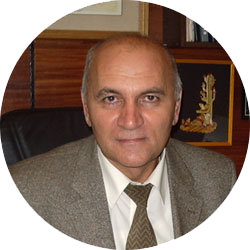Electrochemical activation is a technology to produce meta-stable substances using unipolar (anodic or cathodic) electrochemical exposure for further usage of these substances in various technological processes while they still maintain physical-chemical and catalytic overactivity.
As a physico-chemical process, electrochemical activation is a combination of electrochemical and electrophysical actions (performed in conditions of minimal heat evolution) on liquid (mostly on water) containing ions and molecules of substances dissolved in it, in the area of spatial charge near the electrochemical system electrode (either anode, or cathode) surface during non-equilibribrium transfer of charge by electrons through the border “electrode – electrolyte”.
As a result of electrochemical activation, water becomes meta-stable (activated) demonstrating for a few dozen hours an increased reactivity in various physical and chemical processes. Water activated by cathode (catholyte) acquires such characteristic as superactivity of electrons and a well-pronounced reductant quality. Correspondingly, water activated by anode (anolyte) is characterized by inhibited electron activity and manifests qualities as an oxidant.
Electrochemical activation makes it possible to purposefully change dissolved gases composition, acid-base and oxidative-reductive properties of water in wider limits than under equivalent chemical regulation, allows to synthesize meta-stable chemical reagents (oxidants or reductants) from water and substances dissolved in it. It is used in the processes of water purification and decontamination, as well as for transforming water or diluted electrolyte solutions into environmentally friendly anti-microbial, washing, extractive and other functionally useful solutions, including therapeutic.
Differences between physical-chemical properties of activated and non-activated solutions are illustrated by the results of studying the correlation between the degree of deviation of activated solution physical-chemical parameters from the equilibrium state, and intensity and deepness of electrochemical solution, as well as source solution mineralization.
Bakhir V. M., Panicheva s. A., Prilutsky V. I., Panichev V. G.
ELECTROCHEMICAL ACTIVATION: INVENTIONS, SYSTEMS, TECHNOLOGY,

The book considers theoretical concepts and hypotheses about the nature of the phenomenon of electrochemical activation of substances discovered by Vitold M. Bakhir in the seventies of the last century. It provides information on the most significant inventions in the field of electrochemical activation and the results of the practical implementation of inventions in various fields of science, engineering and technology. It describes various electrochemical systems for producing liquids with an abnormally high activity in oxidation-reduction, catalytic and biocatalytic processes.
Based on the experience of engineering and practical use of electrochemical systems for production environmentally friendly, safe for humans and animals electrochemically activated detergents, disinfectants and for production of the environmentally friendly sterilizing solutions, the authors predict further development of electrochemical activation technology.
Various examples show that the role of electrochemical activation in the near future will steadily increase not only in the field of drinking water disinfection and purification, wastewater and swimming pool water treatment, food industry and agriculture, but also in chemical, petrochemical and mining industries to save raw materials, time and energy, while improving environmental safety and efficiency of the processes.
The book is intended for a wide range of specialists and students interested in the application of electrochemical technologies in various fields of human activity.
ISBN 978-5-6047707-0-2
